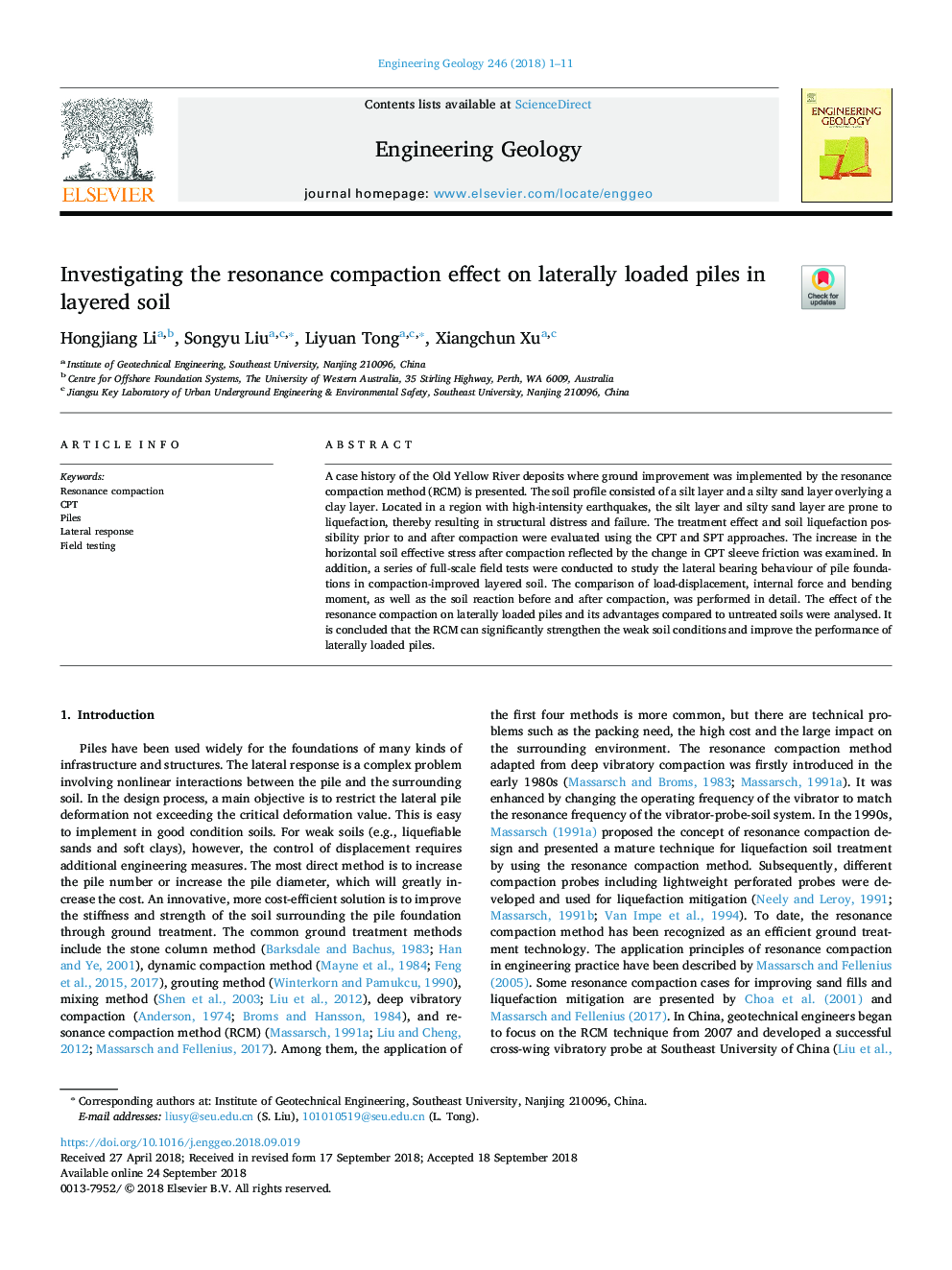| Article ID | Journal | Published Year | Pages | File Type |
|---|---|---|---|---|
| 11017649 | Engineering Geology | 2018 | 11 Pages |
Abstract
A case history of the Old Yellow River deposits where ground improvement was implemented by the resonance compaction method (RCM) is presented. The soil profile consisted of a silt layer and a silty sand layer overlying a clay layer. Located in a region with high-intensity earthquakes, the silt layer and silty sand layer are prone to liquefaction, thereby resulting in structural distress and failure. The treatment effect and soil liquefaction possibility prior to and after compaction were evaluated using the CPT and SPT approaches. The increase in the horizontal soil effective stress after compaction reflected by the change in CPT sleeve friction was examined. In addition, a series of full-scale field tests were conducted to study the lateral bearing behaviour of pile foundations in compaction-improved layered soil. The comparison of load-displacement, internal force and bending moment, as well as the soil reaction before and after compaction, was performed in detail. The effect of the resonance compaction on laterally loaded piles and its advantages compared to untreated soils were analysed. It is concluded that the RCM can significantly strengthen the weak soil conditions and improve the performance of laterally loaded piles.
Related Topics
Physical Sciences and Engineering
Earth and Planetary Sciences
Geotechnical Engineering and Engineering Geology
Authors
Hongjiang Li, Songyu Liu, Liyuan Tong, Xiangchun Xu,
